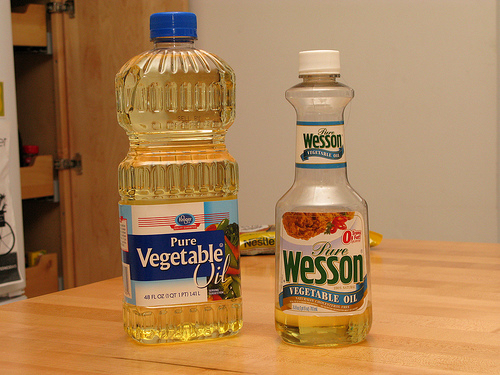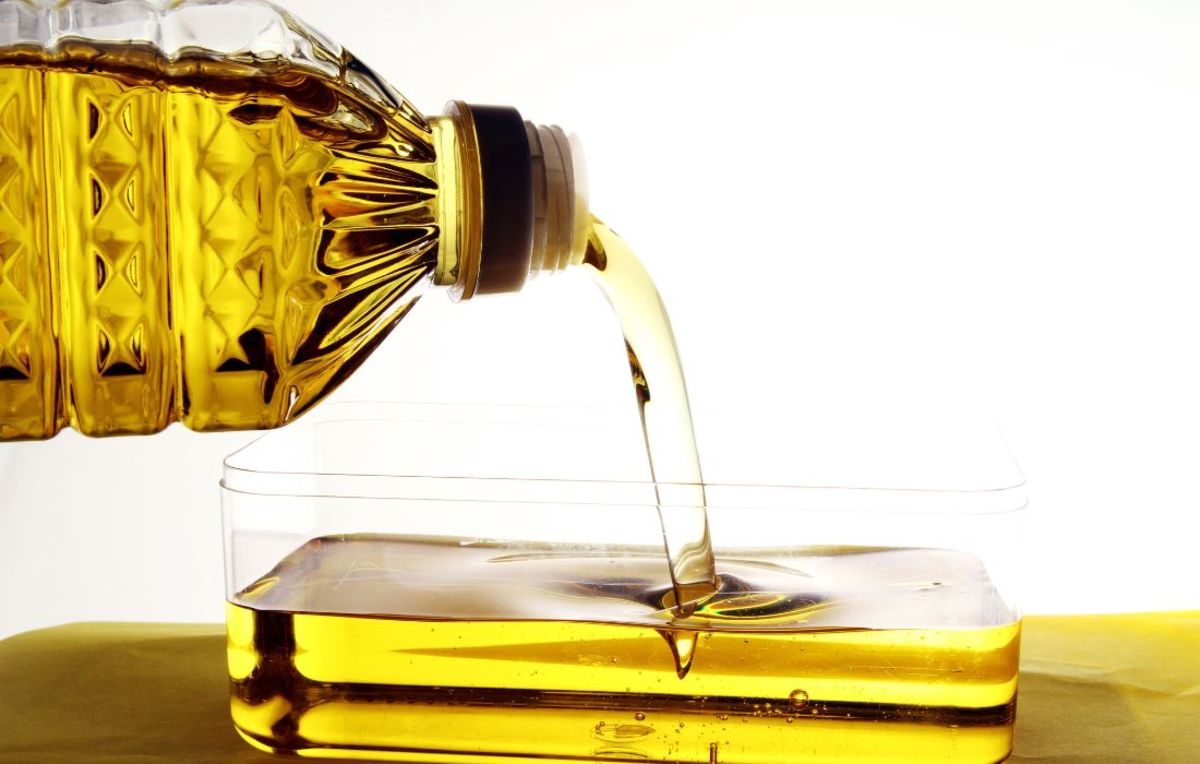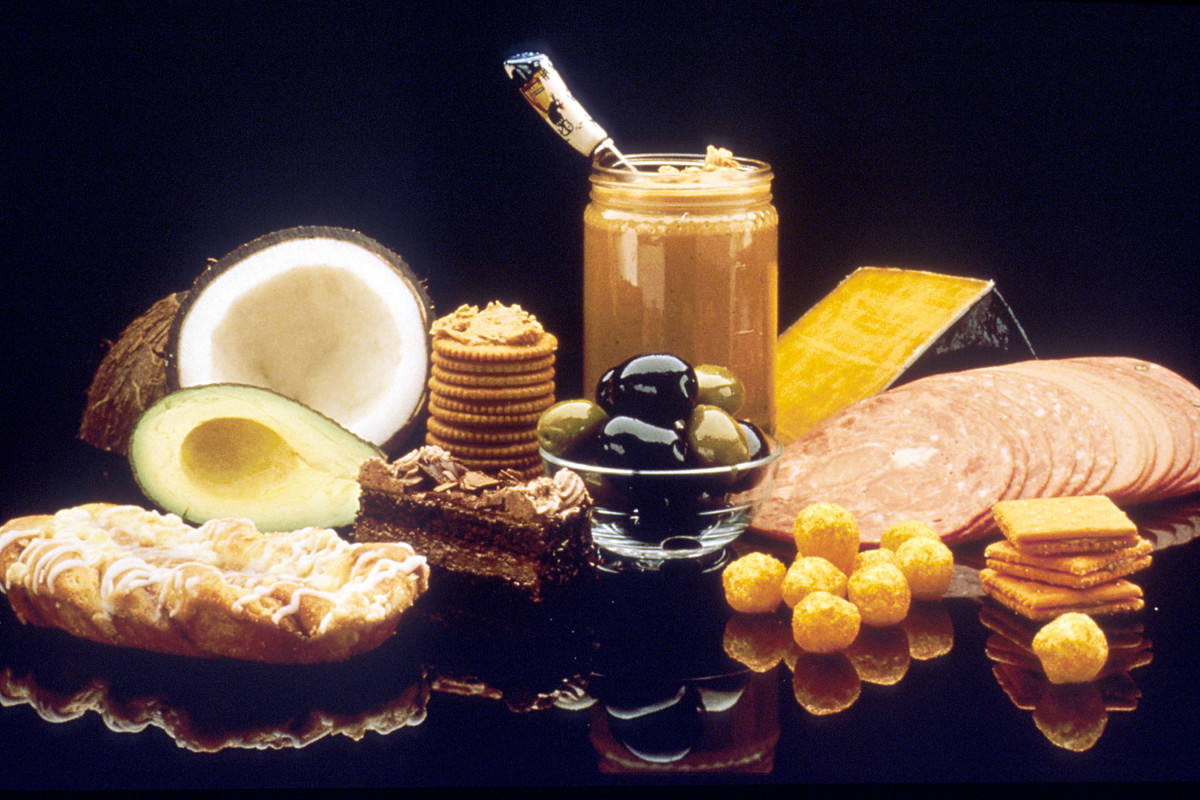A Cook's Guide to Shortenings and Oils
Fats…it’s a four-letter work in our modern society. Did you know, however, that humans actually need a certain amount of fat in their diets? Some vitamins can’t be absorbed without fats, and there are fats that the body can’t synthesize from other food sources. Besides, fats make foods taste good! The bottom line is that fats in moderation are fine.
Basically, there are two types of cooking fats – shortenings and oils. Shortenings are solid or semi-solid at room temperature, and oils are liquid.
When cooking with fats, you need to be aware of their smoke points. The smoke point is the temperature at which an oil or shortening begins to smoke, indicating its deterioration. When that happens, the fat imparts an unpleasant taste to the food that’s being cooked in it, and it also serves as a warning that the oil is about to catch fire.
Below are some popular shortenings and cooking oils and their smoke points:

Shortenings
Margarine – usually a blend of vegetable oils. The smoke point depends on which type of oils the specific margarine contains.
Butter – available in salted and unsalted. Butter has a smoke point of 300-325 degrees.
Compound butter – butter that has been infused with flavors like parsley, anchovies, lemon, chipotle, bacon, avocado, nuts, truffles, garlic, wine, sage, basil, fruit juices, or any combination of these or other flavorings. Compound butters are often used in finishing sauces or as a topping for steamed vegetables, grilled meats, and fish. This product can also be used for sautéing and for blending with rice and pasta. You can make your own or buy compound butters at gourmet shops and online. The smoke point is the same as that for regular butter.
Tallow – made from beef fat or mutton fat. Previous to 1990, McDonald’s fried their French fries in beef tallow. Beef tallow has a smoke point of 400 degrees.
Lard – rendered fat from the backs of pigs. Some Southern cooks swear by lard for frying crispy battered chicken. Lard has a smoke point of 370 degrees.
Leaf lard – fat from around pigs’ kidneys and other internal organs. Leaf lard makes incredibly flaky pie crusts and other pastries.
Salo – fat rendered from cured slabs of pork fatback. It’s common is Eastern European countries, especially Russia and Ukraine. Salo has a smoke point of 370 degrees.
Ghee – clarified butter that’s popular in Indian cuisine. Its smoke point is 485 degrees. Ghee is very stable and can be stored without refrigeration for up to one year.
Schmaltz – fat from chickens and geese, often used in Jewish cuisine. It has a smoke point of 375 degrees.
Smen – a shortening made from sheep or goat butter. The butter is curdled, salted, and aged to a pronounced taste and aroma. Smen usually has a smoke point of 325 degrees.
Strutto – clarified pork fat commonly used in Italy. Its smoke point is 370 degrees.
Vegetable shortening – made from vegetable fats – usually from cottonseed, soybeans, and corn. Vegetable shortening has a higher smoke point – 360 degrees - than butter and margarine.

Cooking Oils
Almond oil – a light oil that can be a substitute for olive oil. It contains omega-6 fatty acids and has a smoke point of 420 degrees.
Avocado oil – an oil that contains vitamin E and is high in monounsaturated fats. It has a very high smoke point, at 520 degrees.
Canola oil – made from rapeseed. Canola oil contains omega-3 fatty acids, is high in monounsaturated fats, and is low in saturated fats. It’s often considered the healthiest of all cooking oils. Its smoke point is 470 degrees.
Coconut oil – has a high content of saturated fats. Resists rancidity and has a long shelf life – up to two years. It has a smoke point of 450 degrees when refined.
Corn oil – an inexpensive vegetable oil made from dried corn. Corn oil has a high level of omega-6 fatty acids and a smoke point of 450 degrees when refined.
Cottonseed oil – a very stable oil that resists rancidity and is often used in mayonnaise and salad dressings. It has a smoke point of 420 degrees.
Grapeseed oil – made from the seeds of wine grapes. It has a very light taste and is popular for making salad dressings and for frying. It has a smoke point of 420 degrees.
Macadamia oil – contains omega-3 and omega-6 fatty acids and is high in monounsaturated fats. It has a nutty fragrance and a long shelf life. Its smoke point is 413 degrees.
Olive oil – made from ground ripe olives. It’s high in monounsaturated fats and contains vitamin E and healthy carotenoids. The smoke point of olive oil depends on the specific type.
Virgin olive oil – produced without chemical treatment. Virgin olive oil contains little acid and has a pleasant flavor. It has a smoke point of 420 degrees.
Extra virgin olive oil – produced without chemicals and has very little acid and a superb flavor. This oil has a smoke point of 375 degrees.
Palm oil – made from the pulp of palm fruits. It’s very stable for frying and has a smoke point of 455 degrees.
Peanut oil – made from dried peanuts and has a slight peanut taste and smell. Peanut oil has a smoke point of 450 degrees and is popular for deep frying.
Rice bran oil – made from the husk and germ of rice. Almost half of its content is monounsaturated fats. It also contains vitamin E and other antioxidants. It has a mild flavor, and because of its high smoke point – 490 degrees – it’s often used for deep frying and stir-fries.
Safflower oil – made from the seeds of safflowers – thistle-like plants. The oil is virtually tasteless and has a high level of monounsaturated fats. Refined safflower oil has a smoke point of 510 degrees.
Sesame oil – made from sesame seeds. This oil is fairly expensive but has a long shelf life. Light sesame oil has a smoke point of 450 degrees and is often used for deep frying. Darker sesame oil has a lower smoke point and is often used for stir frying.
Soybean oil – made from flaked soybeans. It has a high level of polyunsaturated fats. Refined soybean oil has a smoke point of 450 degrees.
Sunflower oil – made from sunflower seeds. It has a high level of monounsaturated and polyunsaturated fats and a low amount of saturated fats. It also contains vitamin E. The oil has a light taste and a smoke point of 450 degrees when refined.
Tea seed oil – made from the seeds of the camellia family of plants. It has a light taste and a sweet aroma. The oil contains a large amount of monounsaturated fats, along with vitamin E and other antioxidants. It has a smoke point of 485 degrees.
Walnut oil – made from crushed or pressed walnuts. The oil has a delicate nutty flavor, a light scent, and contains healthy omega-3 fatty acids. Semi-refined walnut oil has a smoke point of 400 degrees, but it’s rarely used for cooking at high temperatures because the taste of the oil tends to become bitter.

How to Store Cooking Oils and Shortenings
Cooking oils deteriorate with exposure to light, heat and oxygen. To increase the longevity of cooking oils, store them in the refrigerator in a tightly closed container. Refined oils that are high in polyunsaturated fats will keep for about six months in the refrigerator, and those high in monounsaturated fats will keep for up to a year. Virgin and extra-virgin olive oils will retain their flavor and quality for up to a year after being opened, while regular olive oil will keep for about eight months.
Solid vegetable shortenings like Crisco should be stored in a cool, dry place. An opened can will keep for about a year, and an unopened can will keep for up to two years.
Rendered poultry fat will keep up to six weeks in the refrigerator and indefinitely in the freezer.
Beef tallow will keep for about six weeks in the refrigerator and for a year in the freezer.
Hog lard will keep for one year in the refrigerator and for two years in the freezer.
Unsalted butter can be kept in the coldest part of the refrigerator for up to two weeks, while salted butter will keep in the fridge for a month. Butter will keep longer in the freezer – for up to six months. Double bag it in freezer bags before freezing.
Compound butters will keep for up to 5 days in the fridge and for up to 6 months in the freezer. A good way to store it in the freezer is in individual pats or balls. Then you can take out only what you need at one time.
Keep ghee and other clarified butters in a glass jar with a lid. Store it in the refrigerator for up to two months or in the freezer for six months.
Most oils and shortenings can be re-used several times, if they weren’t allowed to reach their smoke point while cooking. Wait until the oil cools, then filter it to remove bits of food. This can be done with a coffee filter or a strainer lined with paper towels. Use a funnel to pour the oil into bottles or other containers. The oil’s longevity and smoke point will be significantly shortened after it has been used, but it will usually keep at room temperature for several weeks. It will last longer in the refrigerator or freezer.
Some chefs actually prefer to use some old oil when frying. They’ll blend in some previously used oil with new because it has more flavor. Keep in mind that this isn’t always a good idea. Foods that were fried in old oils will leave behind lingering flavors and aromas. You wouldn’t want to re-use oil that fried fish for cooking doughnuts, for example.
There is a way, however, to remove most of the residual flavors and smells in cooking oils: fry potatoes in it before re-bottling it. We do this in the South all the time when frying fish.
Ready to put those shortenings and oils to good use? You'll find some of my favorite fried-foods recipes below, along with my secrets for making perfect buttermilk biscuits!
Great recipes using oils and shortenings:
- Fabulous Fried Turkey: How To
Baked turkey is great, smoked turkey is amazingly wonderful, but deep-fried turkey is super-dooper delicious! I'm almost ashamed to admit this, but when we take one out of the fry pot and bring it into the... - Southern Culinary Arts: Old-Fashioned Southern Cornbread Dressing: Step by Step
Welcome to my online cooking school! Today's online cooking classes involve Southern cornbread and Southern cornbread dressing. This recipe is an integral part of Southern culinary arts. You don't have to... - Southern Cuisine: Holle's Country Fried Deer Steaks
In another life (or so it seems), I married into a family of cattle farmers. They had a huge farm, with lots of wildlife, including white-tailed deer. My ex and I were both hunters, and we ate venison often.... - Pastry School: Buttermilk Biscuit Secrets
Welcome to my pastry school and online cooking school! Today's pastry is buttermilk biscuits. I attended one of those formal pastry schools, where I learned many basics, but I've largely expanded my... - Southern Cuisine: Crispy Fried Chicken, with How-To Video
If the South and soul food had a signature dish, surely it would have to be fried chicken! It's definitely one of my all-time favorites, although I try not to eat it too often because of the fat content. But... - Southern Cuisine: Fried Okra
Okra holds a special place in the hearts of most Southerners. I always grew a long row of it my garden for use in gumbos and winter soups, but the best way to eat it is fresh, right from the stalk - battered... - Southern Culinary Arts: Buttermilk Fried Shrimp
I was thinking this morning...what do I know a lot about? What kind of hubs can I produce from my life experiences - ones I can write without doing any research, and ones that I think people will enjoy? Well,... - Southern Culinary Arts: Buttermilk Fried Fish
Welcome to my online cooking school! Today's lesson is the culinary art of frying fresh fish. Folks in the South love fishing. Well, allow me to narrow that down: folks in South Georgia love fishing! We... - Southern Cuisine: Fried Squirrel
When I was married to me ex-husband, we lived on the familys cattle ranch. They had acres and acres of woods, streams, lakes, fields, pecan orchards, and pastures. The woods were full of all kinds of...








